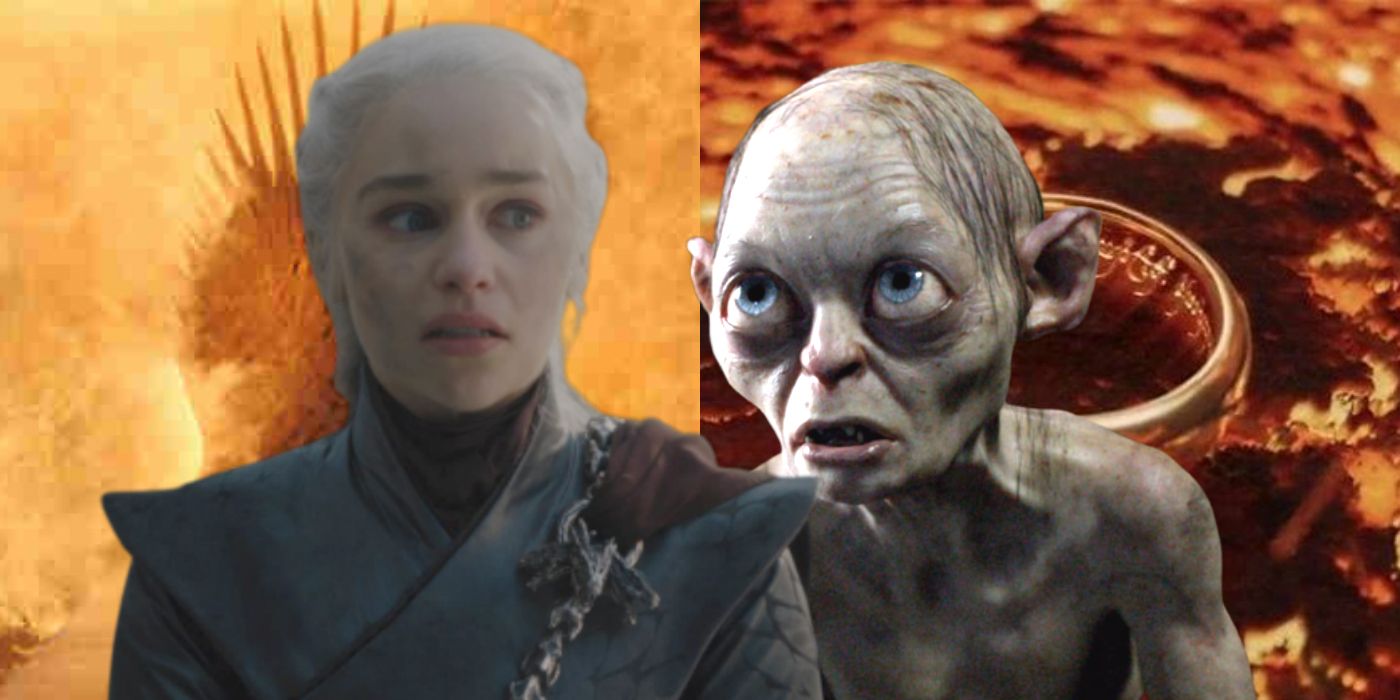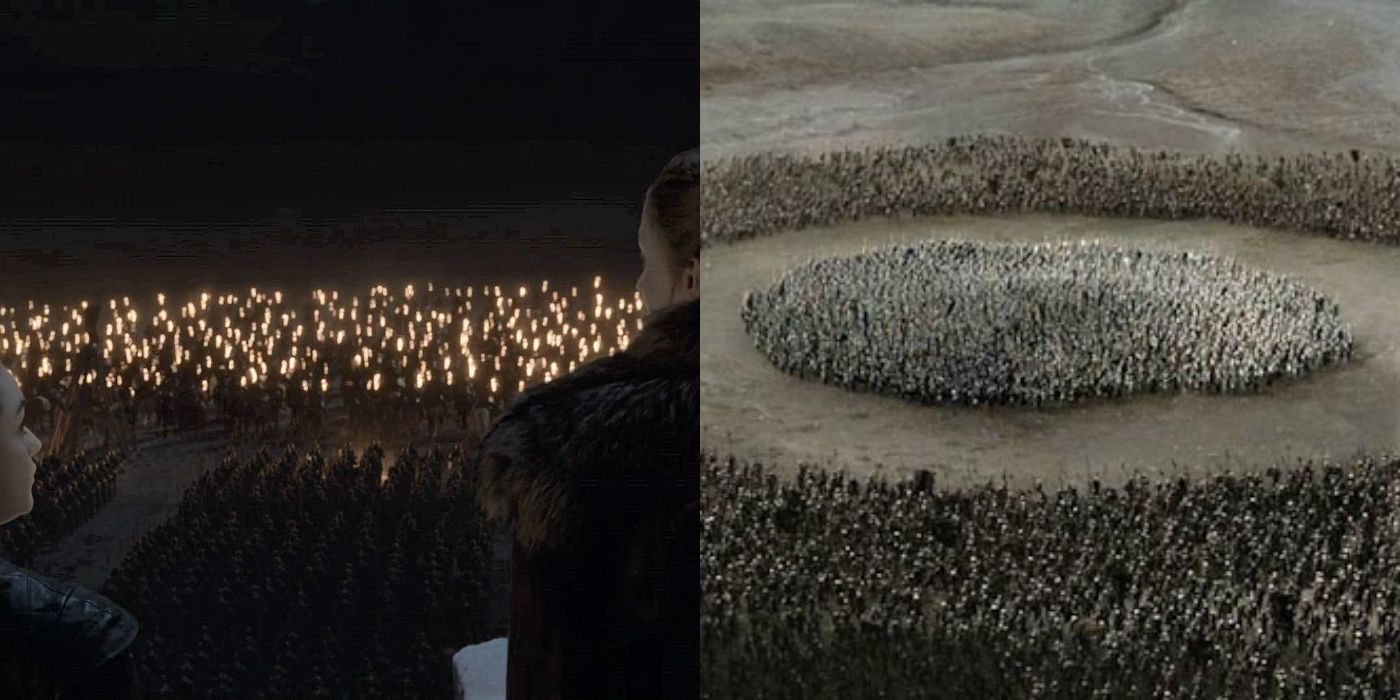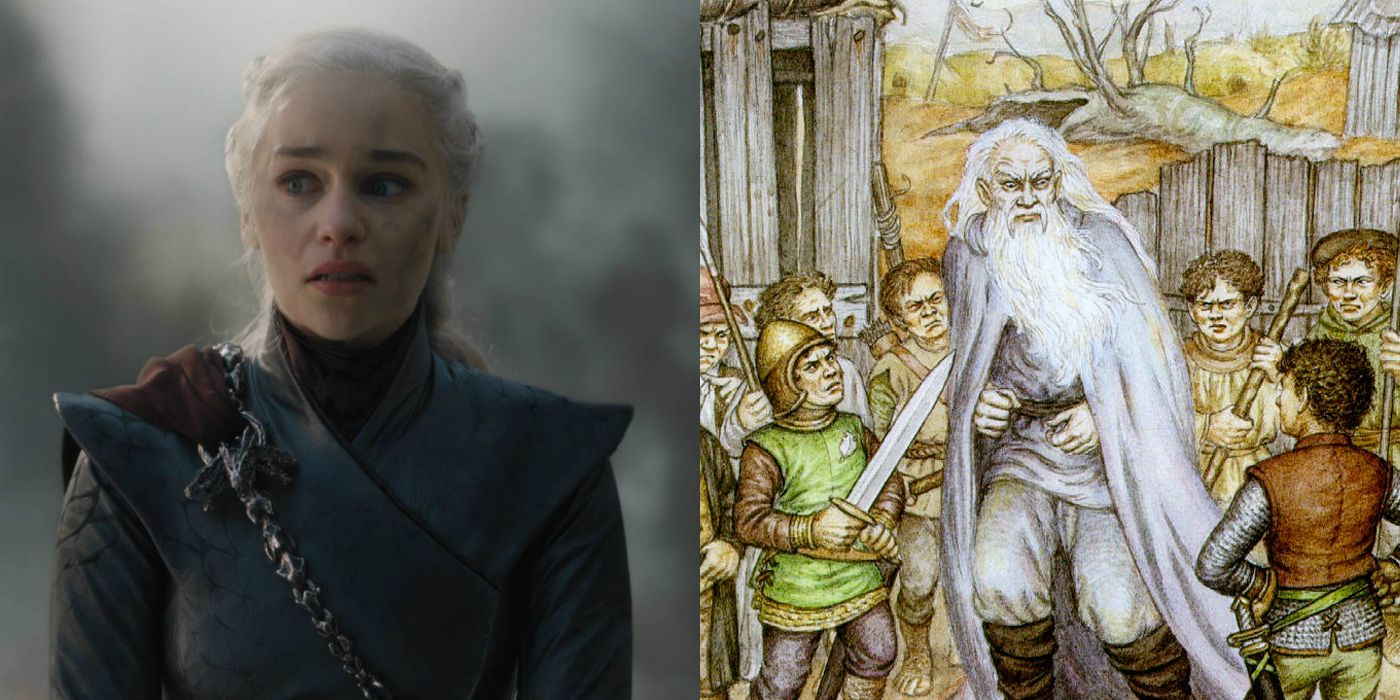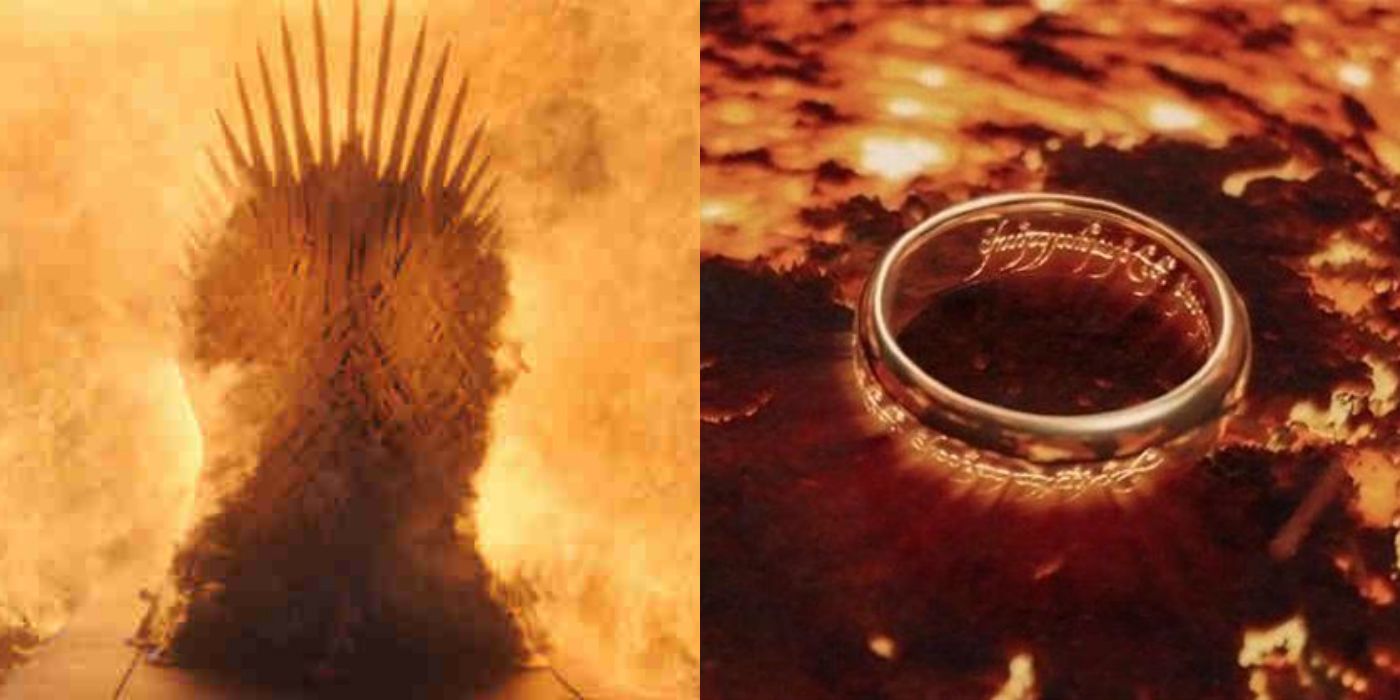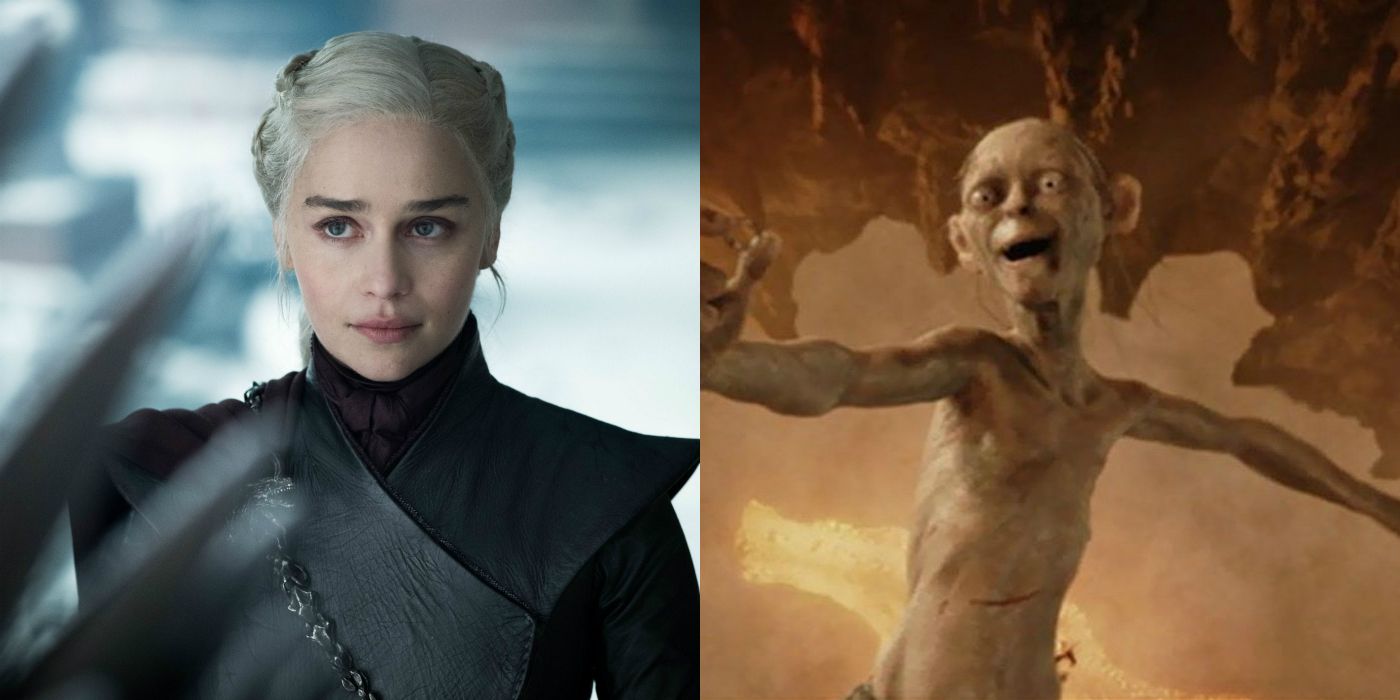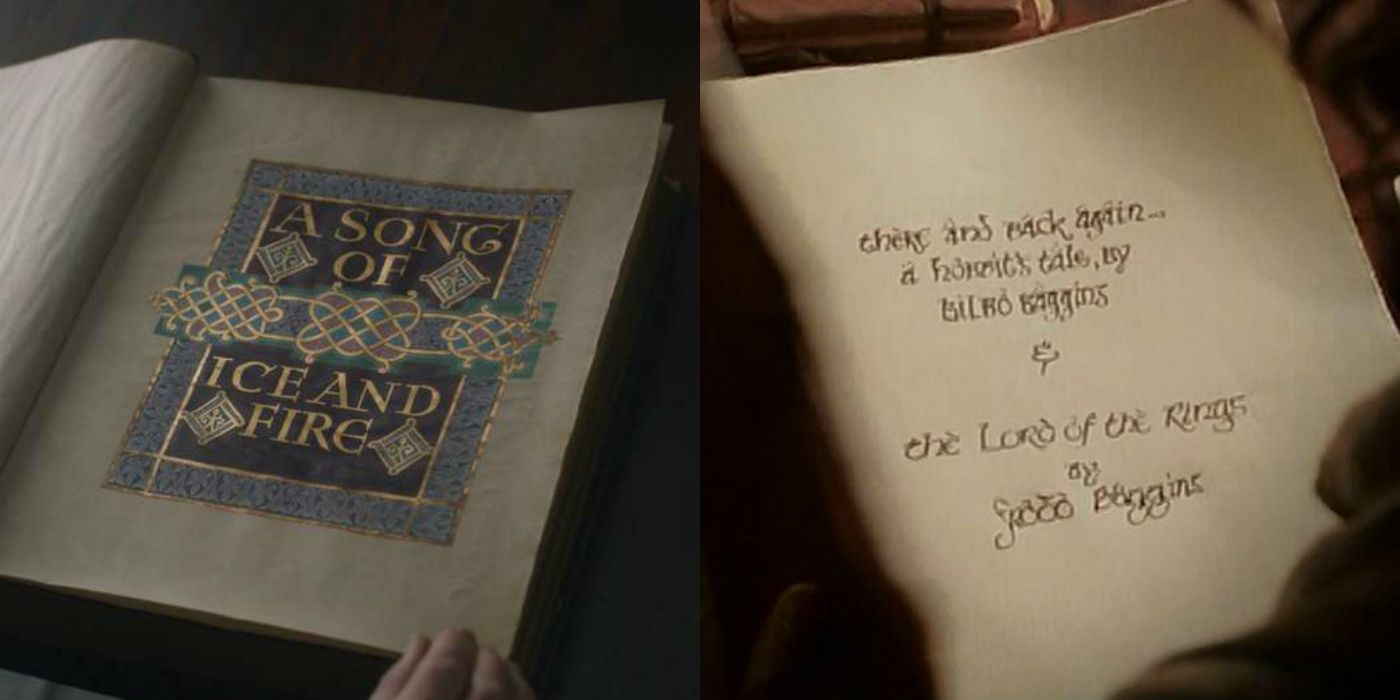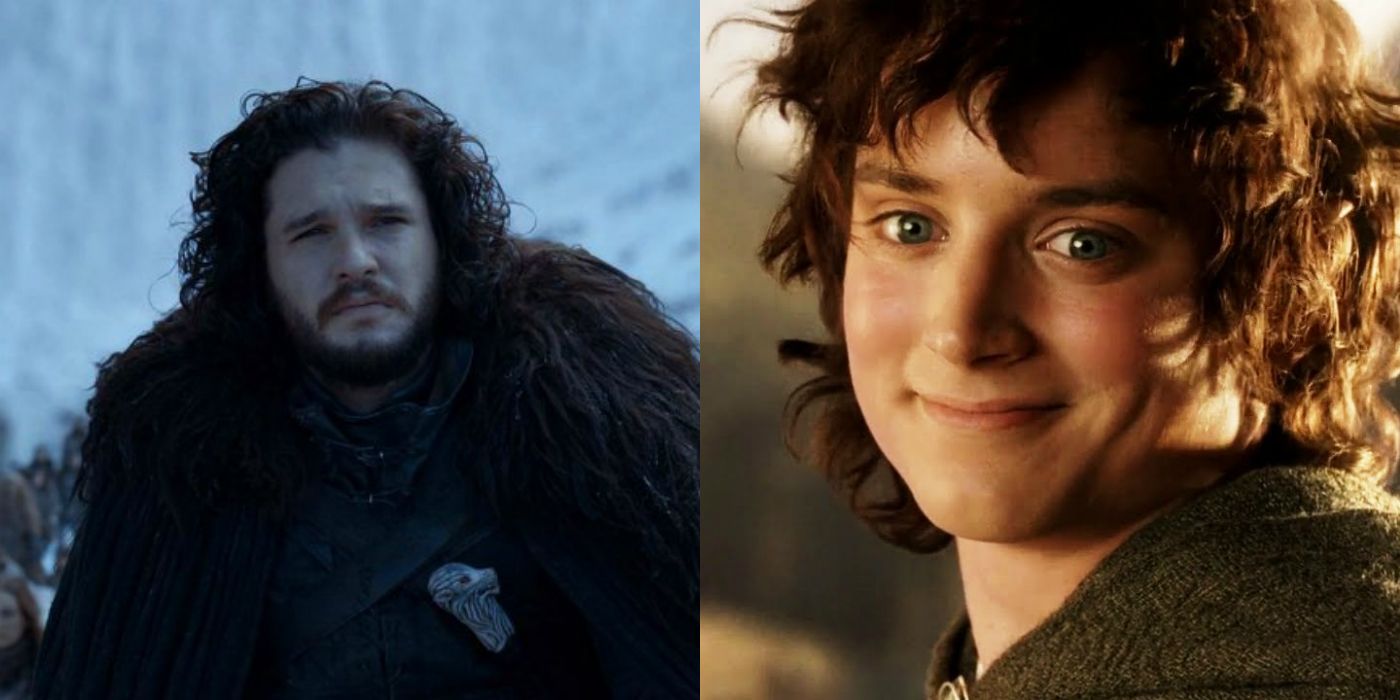Game of Thrones' ending was divisive, to say the least, but fans perhaps should've seen much of it coming, because it holds a number of parallels to the conclusion of The Lord of the Rings. George R.R. Martin has long been influenced by J.R.R. Tolkien, and Lord of the Rings has had a big bearing on A Song of Ice and Fire, which was inspired by the sheer number of Tolkien imitators in the fantasy fiction realm. It's no surprise, then, that Game of Thrones' finale, which follows an ending laid out by Martin, bears so many similarities to Tolkien's most acclaimed work.
It's nothing new for Game of Thrones to be compared to Lord of the Rings: from the show's very beginning, it has been slated as 'Lord of the Rings, but with sex and (more) violence' or some variation on that tagline. It's not hard to see why. They both exist in rich fantasy worlds that hark back to the Middle Ages; they both have epic, sprawling narratives; they feature monumental battles; there are Kings and political power struggles; secret heirs; and best friend sidekicks named Sam.
Game of Thrones almost always subverted those parallels, however, by being less a story of good vs evil and more about the inner conflict within its characters, very few of whom were colored in black and white but rather much more grey. The ending, in some ways, brings the story closer to Lord of the Rings, with the most overt (and crucial) similarities. Some are just aesthetics, like the shot of Drogon carrying Daenerys compared to the eagle carrying Frodo, or the coronation of Sansa to the crowning of Aragorn, but others have a far deeper significance.
The Long Night Is The Battle Of The Black Gate
Game of Thrones' "The Long Night", which featured The Battle of Winterfell that saw the living fighting the dead, was mostly compared to the Battle of Helm's Deep from Lord of the Rings: The Two Towers, and understandably so. From the scale of the action to the non-fighters hiding, it does have similarities to Lord of the Rings' most famous battle, but in narrative terms it's more like the Battle of the Black Gate, which was the final fight in the War of the One Ring and eventually led to the destruction of both the Ring of Power and Sauron.
In both battles, there is a coming together of remnant forces from across the lands, and a conflation of almost all major characters. There's a lot of fighting, and there are moments where it appears as though hope is lost. In Game of Thrones, the humans fight wights; in Lord of the Rings, it's Orcs. There were deux ex machinas - Melisandre; the eagles - and distractions, with the plan of both being to lure forces away from the real target: Bran in Thrones, Frodo in LOTR. The result is effectively the same too: the Battle of Winterfell ends with the Night King being killed, defeating all of his forces at the same time, while the action in Mordor sees the One Ring destroyed and Sauron dying, which in turn leads to his army being beaten.
Daenerys Burning King's Landing Is The Scouring Of The Shire
One crucial event from The Lord of the Rings that wasn't included in Peter Jackson's movie adaptation is The Scouring of the Shire. The penultimate chapter of Return of the King, it finds the hobbits returning to the Shire after their defeat of Sauron, only to discover that their home has been taken over and ruined by evil-doers led by Saruman, now going under the name of Sharkey. This leads to the Battle of Bywater, the final conflict in the War of the One Ring, with Frodo, Samwise, Merry, and Pippin helping drive the forces of darkness away from the Shire.
This particular chapter in Tolkien's work is one of Martin's favorites, and something he'll likely include a variation of in his own work. It won't be the exact same as in Game of Thrones, which gives us a version of the Scouring of the Shire with Daenerys' attack on King's Landing (something that will probably happen before The Long Night in the books). This is an event that comes when the heroes have won the day, celebrated their victory, and think the fighting is over, before Dany not only turns her attention to Westeros' capital, but does so in a way that completely destroys the city and kills countless innocents. In the way the Unsullied are turned against the smallfolk, too, we can see elements of Saruman corrupting the people of the Shire.
The Iron Throne's Destruction Is The One Ring
The Iron Throne in Game of Thrones has long been compared to the One Ring from Lord of the Rings. Not only are they the objects that give each series their respective title, but we've been shown on numerous occasions just how corrupting an influence they can be. Yes, there are those who are already evil, but we can see how the lure of the Iron Throne turns people like Stannis and Daenerys, much like the One Ring does Boromir and Gollum. Both artifacts are not only symbols of power, but illustrations of the damage power can have, and those parallels run deep into the destruction of them both.
At the end of Lord of the Rings: Return of the King, the One Ring is destroyed by the fires of Mount Doom. It was in those same fires, of course, that the ring was first forged, so there's a sense of things coming full circle at its end. The same can be said for the Iron Throne. When Aegon I Targaryen conquered Westeros, he had his dragon, Balerion the Black Dread, melt down the 1,000 swords that had been surrendered to him, using the metal to forge the Iron Throne. It's then destroyed by the same fire that made it, with Drogon - the largest of Daenerys' dragons, and often spoken of in similar terms to Balerion - melting it down again in Game of Thrones' finale.
Daenerys' Death Is Gollum's Ending
Daenerys and Gollum aren't exact matches as characters. Dany is the hero for the vast majority of Game of Thrones, only turning at the very end. Gollum, on the other hand, while not inherently evil, is someone who throughout Lord of the Rings often errs towards the side of bad. And yet, there's a very clear tragedy in both of their fates, and a parallel in there too.
Like Gollum, Daenerys is corrupted by the symbol of power, in this case the Iron Throne. And crucially, her death comes at the very moment it appears she has grasped that which she has always wanted. Just when she has a hand on the Iron Throne, and it is finally hers, Daenerys is killed by Jon Snow. That has some loud echoes of Gollum's own downfall, as he finally gets the One Ring at the end of Lord of the Rings, but dies alongside it in the fires of Mount Doom. Both were corrupted and ultimately killed by that which they most deeply desired.
A Song Of Ice And Fire Is Bilbo & Frodo Writing Their Story
One of the most prominent Game of Thrones fan theories in recent years was the idea that Samwell Tarly was writing A Song of Ice and Fire, something we'd see at the end of the show. Thankfully that didn't come to pass, but the series finale did come close. Instead of Sam actually writing the book, he simply presents it: Archmaester Ebrose's A Chronicle of the Wars Following the Death of King Robert I, now titled A Song of Ice and Fire. Nudge nudge, wink wink.
The meta moment isn't just Game of Thrones giving a nod towards the fan theory, but also mirroring the endings of both The Hobbit and Lord of the Rings. In the former, it's Bilbo Baggins who writes the story of his adventures, before leaving it to Frodo to complete, who then passes that task on to Sam. The result is the There And Back Again: A Hobbit's Tale by Bilbo Baggins, and Lord of the Rings by Frodo Baggins.
Jon Going North Is Frodo Going To Grey Havens
Throughout most of Game of Thrones, Jon Snow was seen as the Aragorn figure: with his flowing dark hair, legendary skill with a sword, and the small matter of secretly being the rightful heir, it looked clear where his arc was going. In the finale, though, it became clear that Jon wasn't Aragorn, but Frodo. From being the unlikely hero to having a best friend called Sam and a wound that never heals, there were already similarities between them, but it's most explicit in their endings.
When Jon is sent back to the Wall, he stops at the harbor of King's Landing to see an emotional farewell to Arya, Sansa, and Bran. He does this just before boarding a boat that will take him to the end of the world, effectively, and will likely never be seen again. If it seems familiar, it's because it's a lot like Lord of the Rings, with Frodo saying goodbye to his fellow hobbits before sailing off to Grey Havens. Jon then choosing to go beyond the Wall and into the far North further hammers home just how similar his ending is to Frodo's. Both have been the hero, but they've given and lost too much of themselves to ever just go on as normal, but can now find a sense of peace at last. It's fitting that Game of Thrones ends on this moment for Jon, just as Lord of the Rings concludes on the equivalent scene for Frodo.

